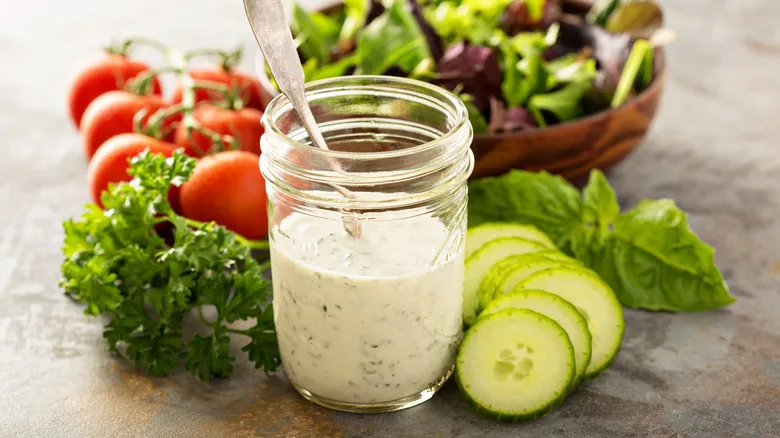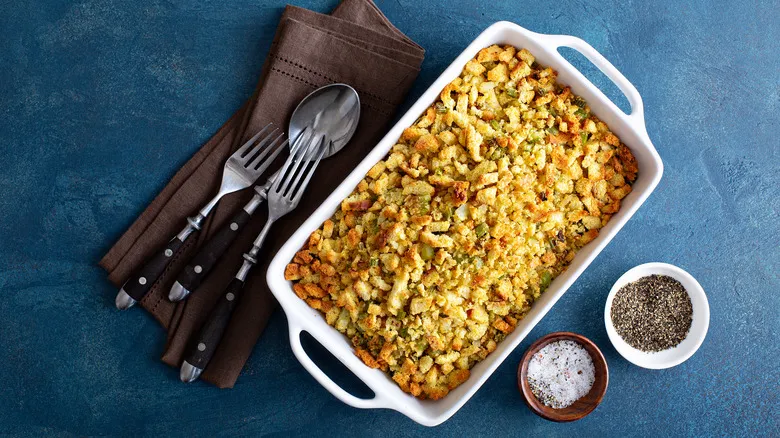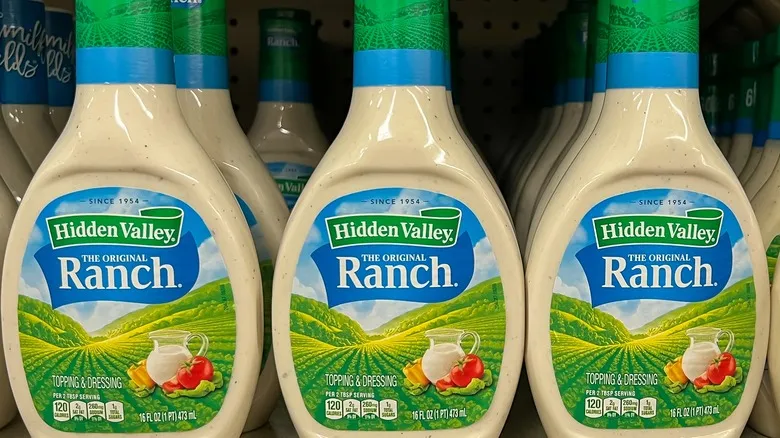How the dressing outlived the ranch

In a 1987 letter to the Los Angeles Times, Alan Barker recounted his memories of Steve and life at Hidden Valley Ranch. "He captivated most visitors to the ranch," Barker noted. Kenneth Henson "established Hidden Valley as a blend of a country club, nightclub, and dude ranch in the mountains... However, the ranch struggled to gain traction and quickly went bankrupt." Barker also mentioned that UCSB fraternities and sororities frequently used the ranch for parties, which certainly adds a different atmosphere compared to the pastoral image suggested by the label.
One aspect that did succeed, however, was the creamy salad dressing that Henson created in Alaska. Guests enjoyed it so much that ranch dressing seasoning packets were soon available for mail-order. "It consisted entirely of dry ingredients, just like my dad made it," Steve's daughter Nola Henson told The New York Times. People would later mix the dry seasoning with their own buttermilk or mayonnaise.
In 1972, Henson sold the dressing business to Clorox for $8 million. While it may seem unusual for a cleaning company to acquire food products, Clorox played a crucial role in making Hidden Valley dressing shelf-stable. By 1983, the dressing was on store shelves, forever changing the culinary landscape.
What happened to the ranch?

What became of the ranch, though? That remains somewhat of a mystery. The ranch has changed hands multiple times, including a sale in 1992 for $1.65 million. It is thought to be located near San Marcos Pass, where the restaurant Cold Spring Tavern is situated—this is where Kenneth Henson first started selling his now-famous dressing. Cold Spring Tavern is still in operation and, of course, continues to offer ranch dressing on its menu.
Henson passed away in Reno in 2007 at the age of 89, but his recipe still delights at picnics, dinner gatherings, and snack times. Hidden Valley has become a source of inspiration, a cultural icon, and a profitable brand. There have been Hidden Valley Cheez-Its, Hidden Valley Ranch chapstick (in collaboration with Burt's Bees), and even a couch designed by Dani Dazey that draws from the aesthetics of the iconic dressing bottle, which sold for $10,000. It’s clear that the legend—and essence—of the ranch endures.
Recommended

Marie Antoinette Didn't Bring The Croissant To France. So Who Did?

14 Pasta Dishes With Fascinating Origin Stories

The Documentary-Worthy History Of McDonald's Filet-O-Fish

Dressing Vs Stuffing: The Differences You Need To Know
Next up

